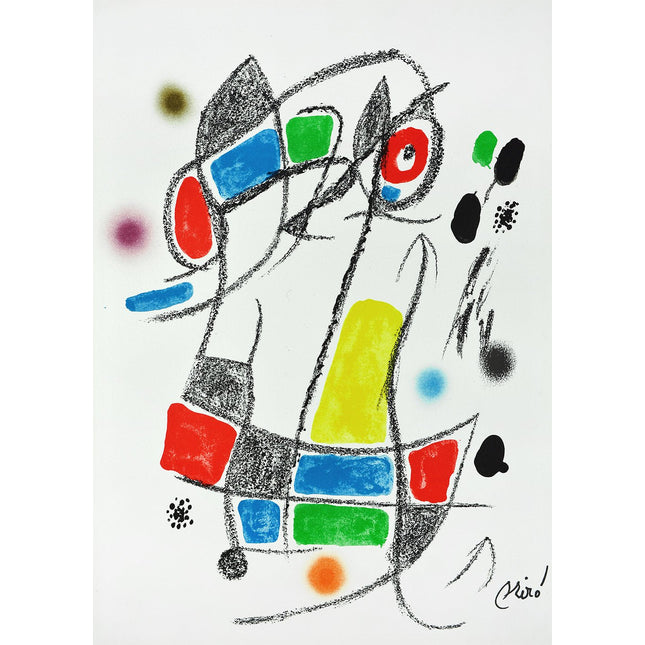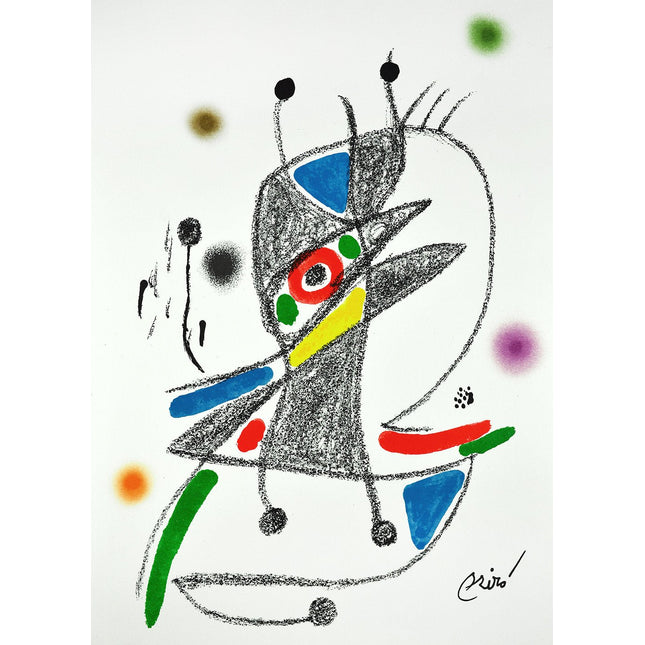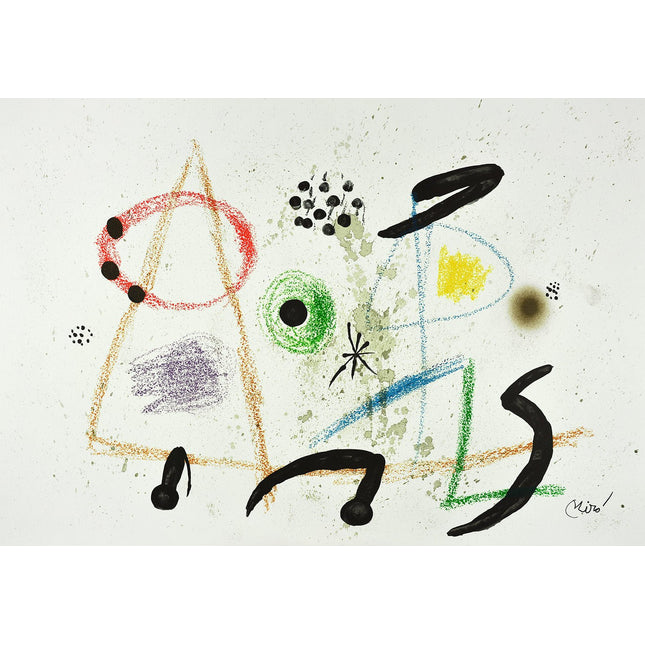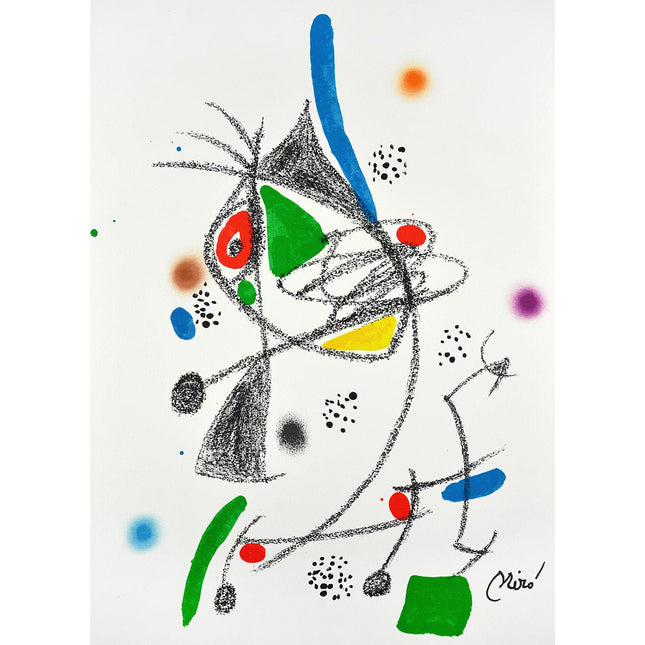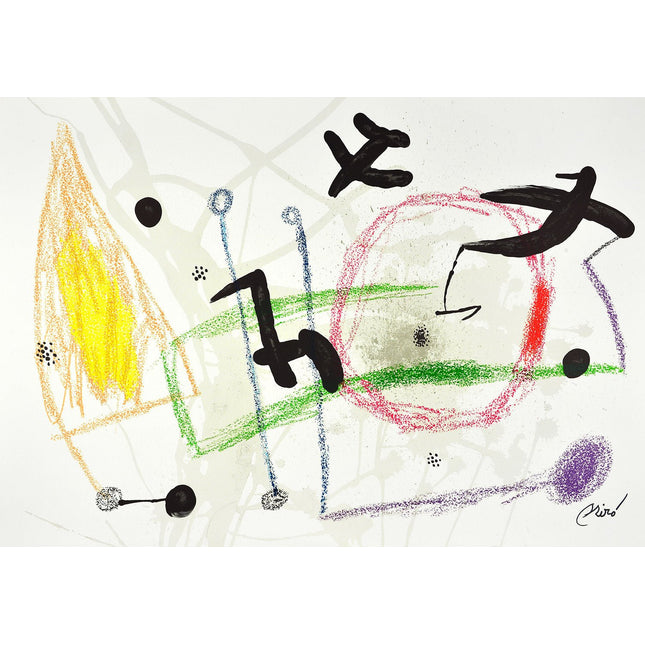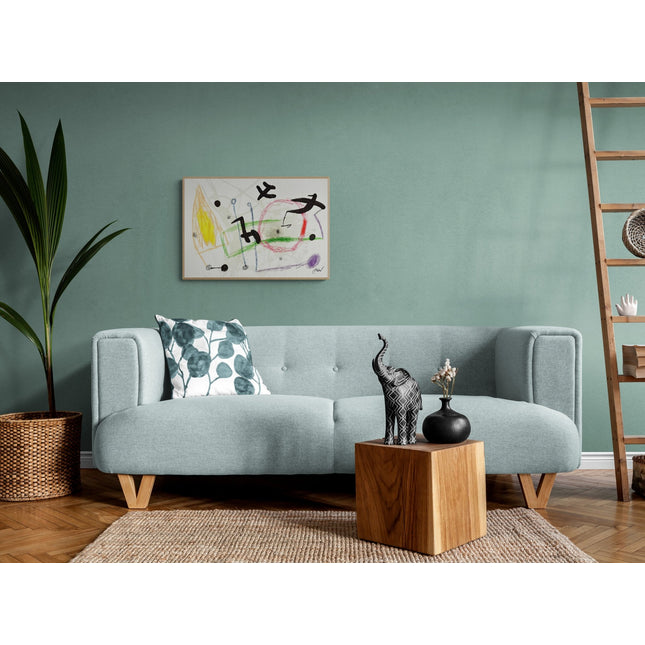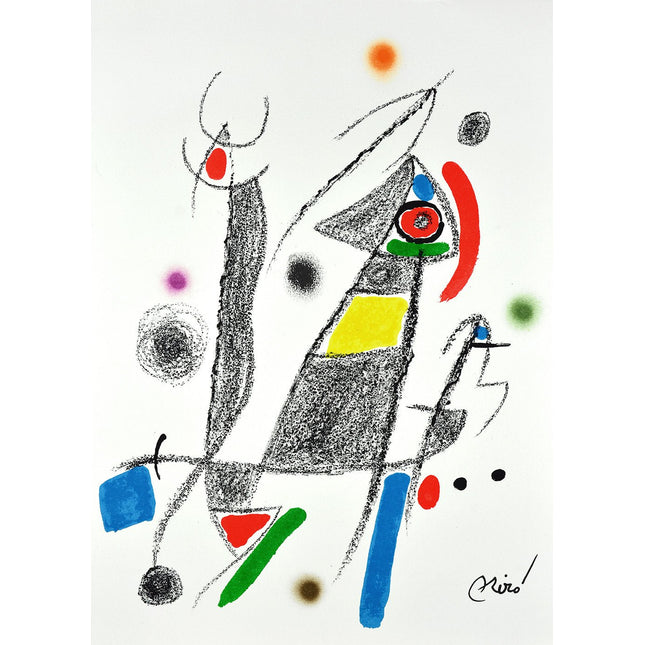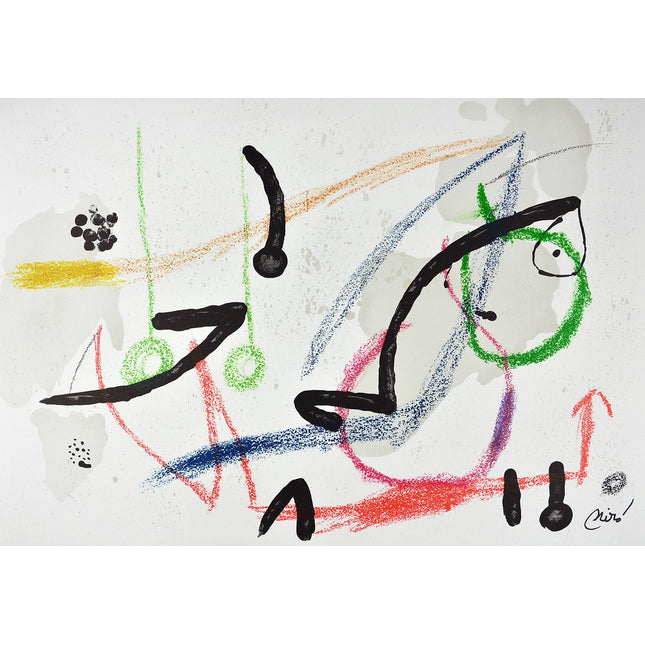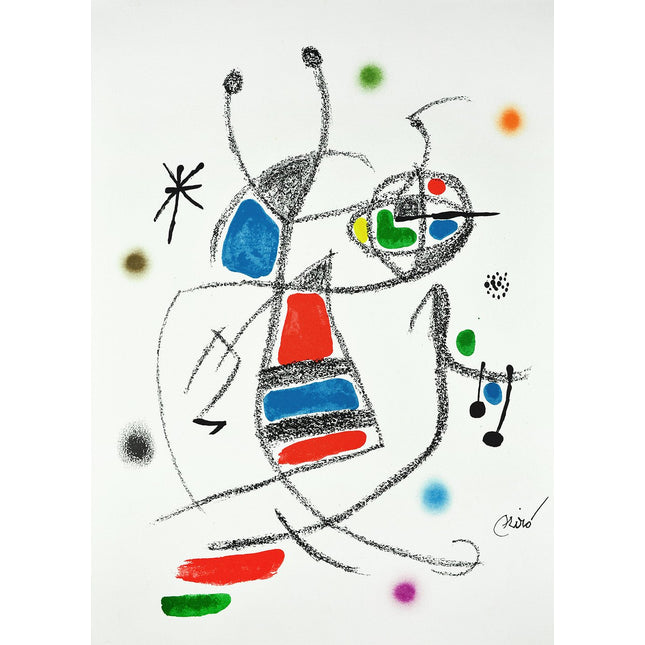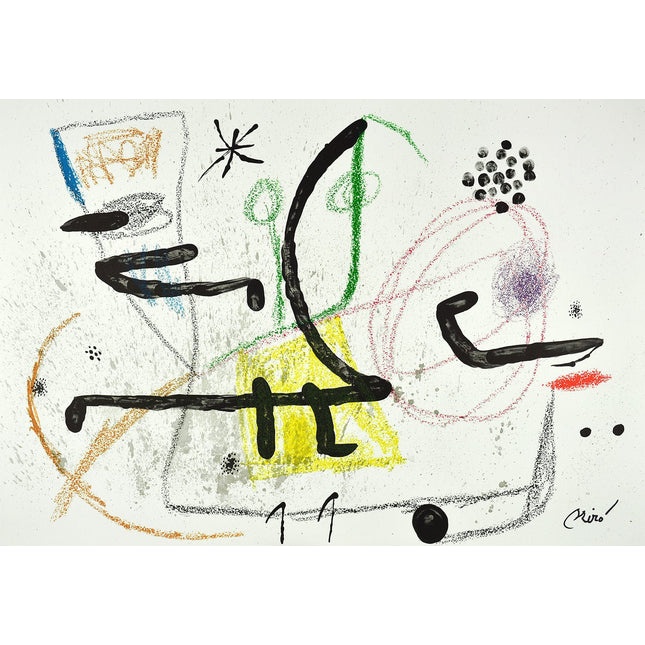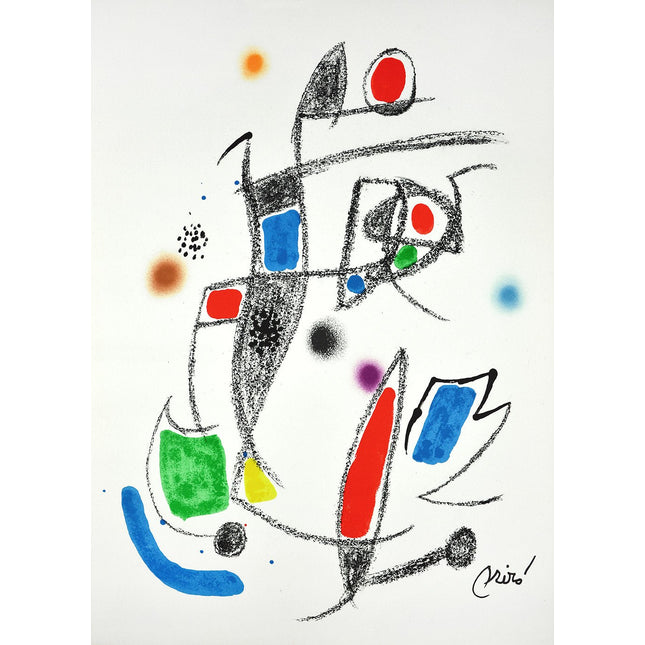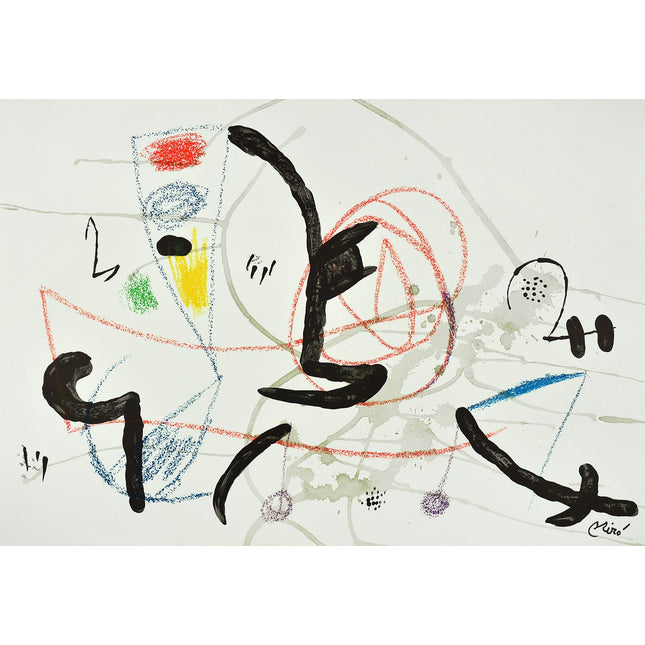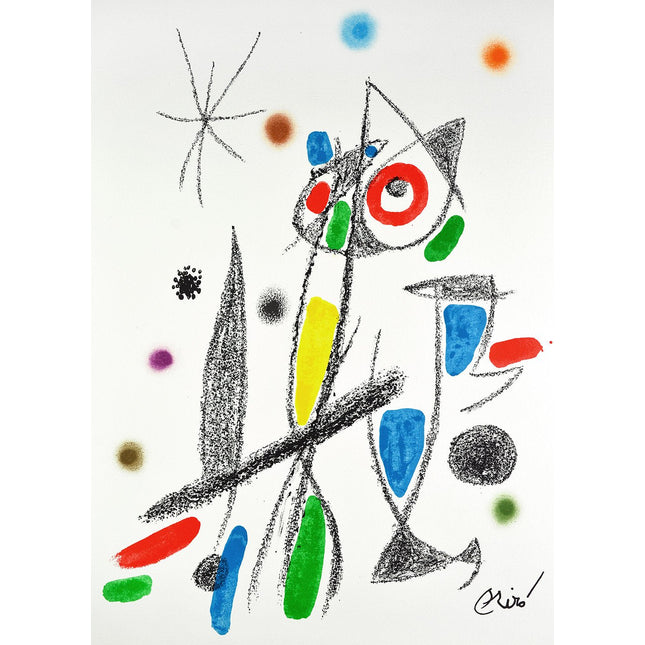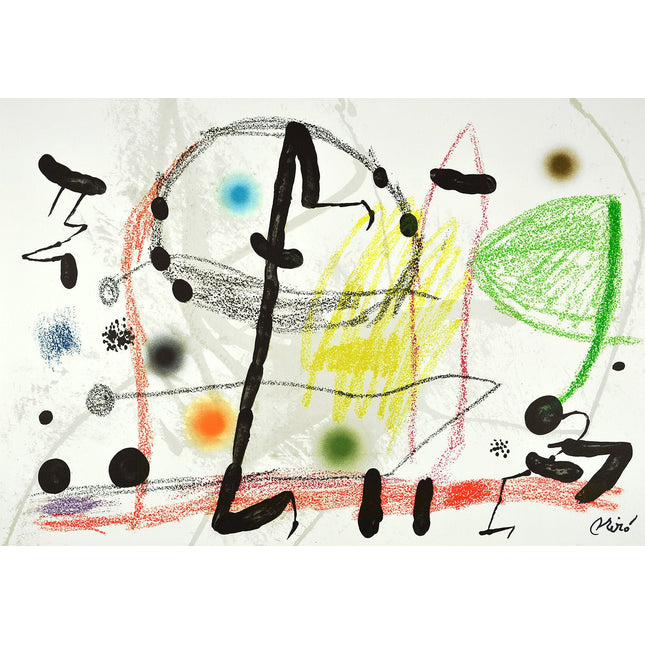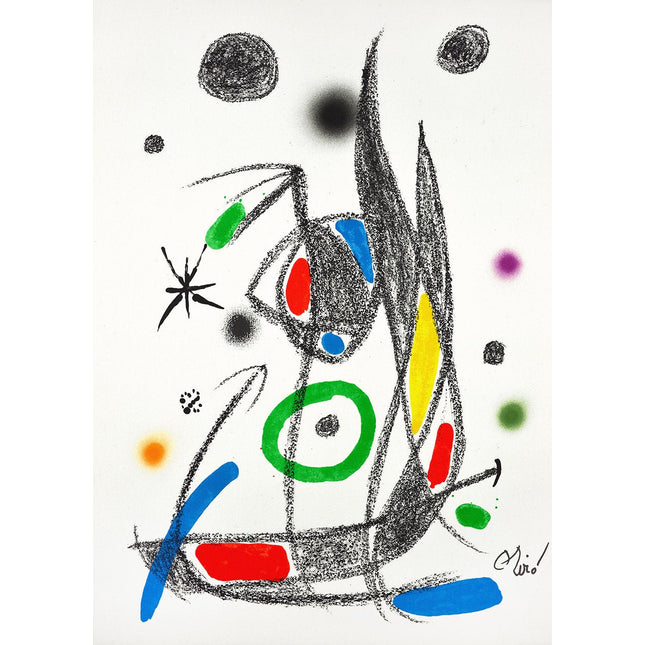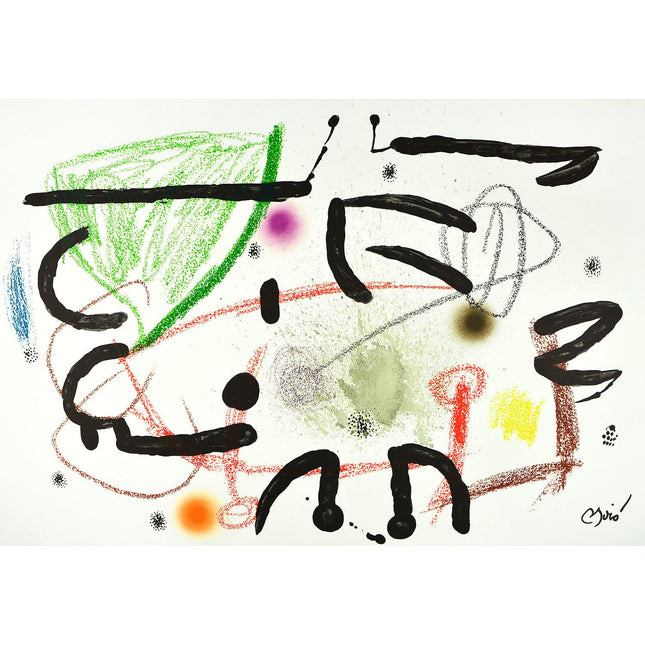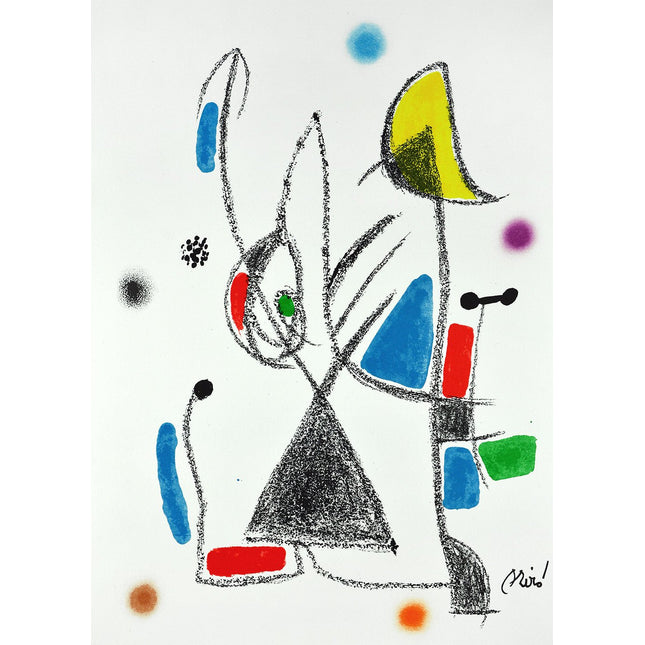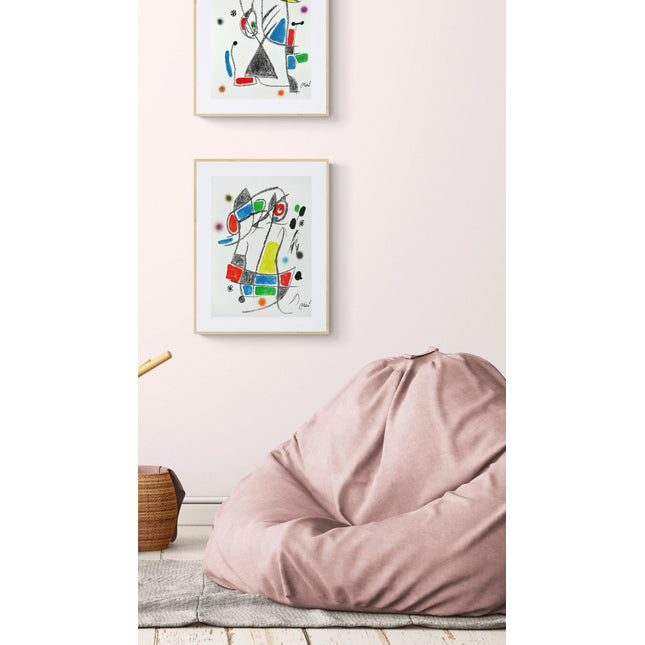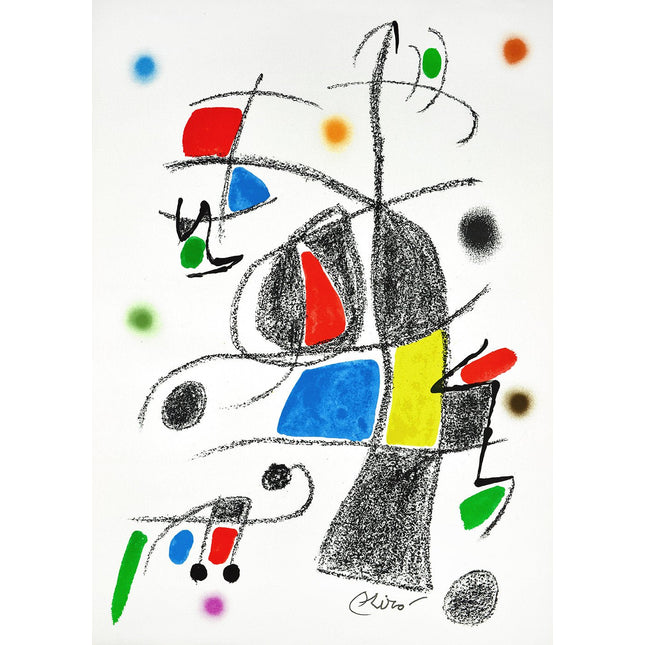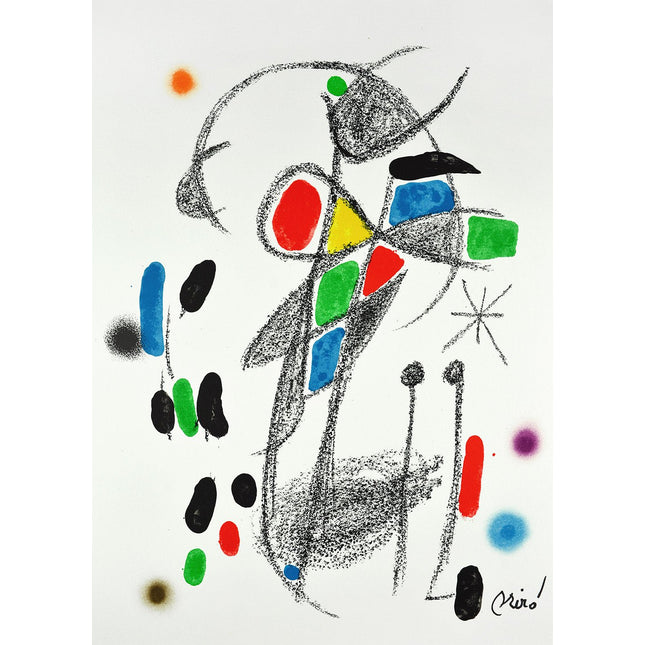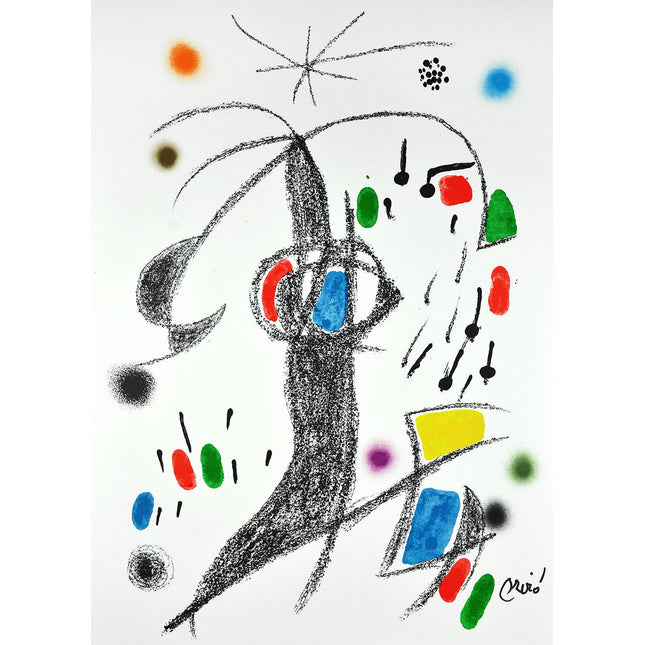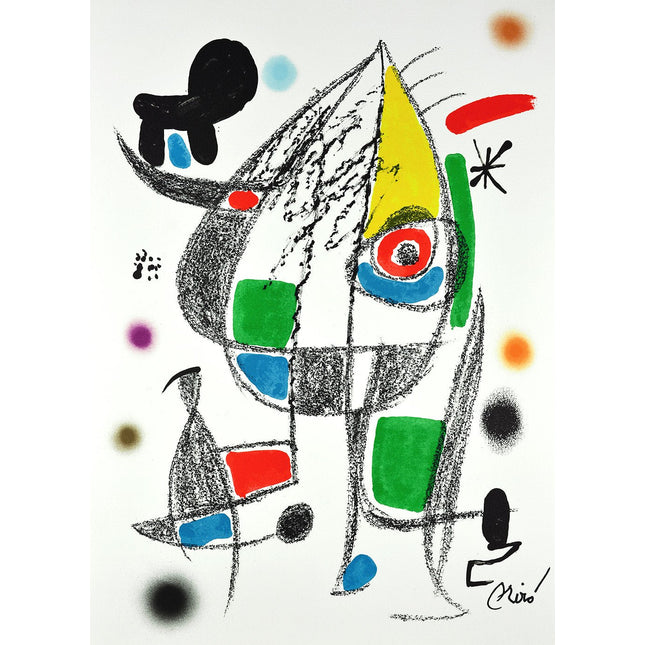Joan Miró was born on April 20, 1893 in Barcelona, Spain. He studied for three years at the School of Arts and Crafts in Barcelona (also called La Lonja) and later completed his training at Francesc Galís workshop. Very soon, Joan Miró received the support of the gallery owner José Dalmau, whom would give him the opportunity to have his first solo exhibition in 1918.
Miró did his first trip to Paris in 1920 and there, he met other artists such as Pablo Picasso or Tristan Tzara. With the latter he made his first forays into the Dada movement. Four years later the artist would become part of the surrealist group. In 1925, Miró had his first solo exhibition at Parisian Galerie Pierre which ended up being one of the most important surrealism events of the moment.
In 1928 Joan Miró visits the Netherlands and takes as inspiration the great masters of the country to make his pictorial series. That same year he created his first collages and papiers collés.
In 1929 the artist begins his adventure with the graphic work, experimenting first with lithography and later with engraving. His first etchings date from 1933. During this time Miró also creates sculptures adding paint and different found objects on them.
The New York MOMA made two retrospectives in 1936 entitled "Cubism and Abstract Art" and "Fantastic Art, Dada, Surrealism" which featured works by Joan Miró. By this time, due to the Spanish Civil War, and like so many other artists of those times, Miró is forced to leave his native Barcelona to settle in Paris. He won't return to Spain until 1940.
In the mid-40 Miró performs some work in ceramics with Josep Llorens Artigas, publishes a series of lithographs called "Barcelona Series" and starts working with bronze sculpture.
Miró travelled for the first time to the United States in 1947 to paint a mural in the Cincinnati's Terrace Plaza Hotel. That same year Marcel Duchamp and André Breton organized an exhibition at the Maeght Gallery entitled "Le Surréalisme en 1947: Exposition Internationale du surréalisme" in which the work of Joan Miró is shown. A year later, Miró would have his first solo exhibition at this important gallery.
During the 50s Joan Miró continues to work in printmaking and sculpture and definitely moves to Palma de Mallorca, where he sets up his studio. Travels for the second time to the United States and creates two murals at the UNESCO headquarters, which were inaugurated in 1958. For this project, Miró would have a great international recognition that was confirmed with the Guggenheim International Award presented to the artist.
In 1967, along with Artigas, Miró creates a ceramic installation for the Guggenheim Museum in New York and is awarded the Carnegie International Grand Prize for painting. A year later, in 1968, Miró would do his last visit to the United States to be awarded with an honorary degree by Harvard University.
In 1972 he creates the Joan Miró Foundation, although it would not open its doors until 1975. In it we can find today, an extensive collection of paintings, sculptures, tapestries and prints of the artist.
Joan Miró died on December 25, 1983 in Palma de Mallorca.

